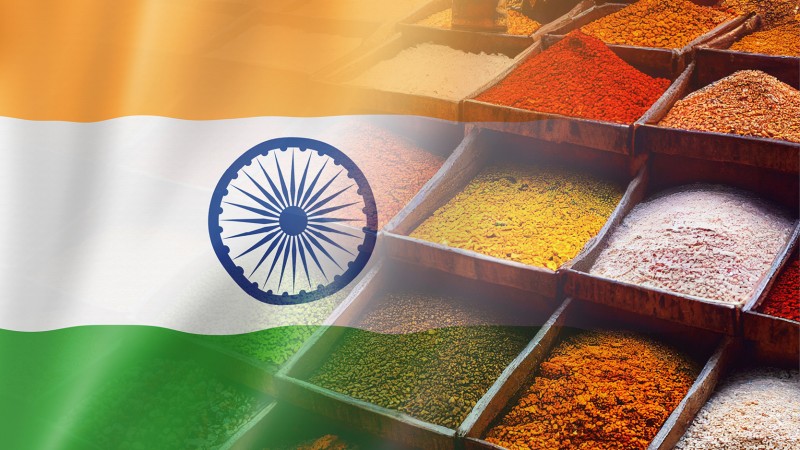Sesame seeds and Spices: “Collaborative steps are needed”
January 2, 2023 at 1:00 PM ,
Der AUDITOR

Which were the major difficulties faced by the Indian sesame seed and spices market in 2022? Were they mainly caused by the ongoing threat of the Ukraine war and the resulting energy crisis and inflation, or do you think they would have occurred in a calmer year as well?
Overall, the sesame seed and spices market remained stable throughout the year in terms of demand and supply, except for one commodity, which is cumin. In the spices market, if the graph is zoomed to weekly segregation, then only cumin was able to outperform from the rest of the crops.
As far as the hurdles are concerned in the present and the upcoming years, then the only major thwart existing is negligence of farmers towards good agricultural practices. The Indian crops have a higher ratio of rejection, due to failure of compliance to pesticidal residue for the International Market. In addition, even the hike in sea freights played a vital role in compressing the trade and compelled the importing nations to be self-reliant or procure from the nearby countries by compromising in quality to some extent.
Further, the impact of the Russia-Ukraine war definitely has left a deep scar on every market. Both countries are least involved in sesame seed production, but the most noticeable disturbances occurred in the coriander trade in the last three months. The Indian traders did not expect such huge magnitude of intervention and cilantro is still facing the attrition and prices are declining every week. The war had also a direct effect on the inflation, the prices started rising at a jet-speed in crude, metal, fast moving consumer goods and agricultural commodities, due to which the end consumer faced the burden and as a result the buying capacity got reduced from retailer to the trader.
Which effects of the coronavirus pandemic are still noticeable?
The Covid-19 era almost vanished in the second quarter of the present year, from every nation, only China had some phases of lockdown in a few cities, otherwise these pandemic repercussions did not create any deviation in the import-export market. Also the travel and transport are freely happening, which in turn is boosting trade.
In most markets, prices for feed and food commodities have increased significantly compared to last year. Indian sesame seeds are no exception here. Do you think that buyers will have to adjust to these higher prices in the long term, or do you expect prices to decline again?
Sesame seeds did not climb the ladder of price hike this year, there is hardly a change of 7 to 8% from the starting of the year. There are three main reasons for such prolonged stability. First, the sesame seed production including the brown and black variety was better than expected, hence the domestic and international demand was easily sufficed. Second, the massive imports of palm oil from Indonesia and Malaysia broke the spine of sesame oil extraction industries and these industries did not participate with enthusiasm in the local procurement, as it was observed in the last three years.
Third, on the international platform the nations of Nigeria and Pakistan gave a cut-throat competition to Indian sesame seeds. However, Pakistan had to suffer through the downpour and the yield decreased by almost 50%. But next year both nations will create their strong presence and profound base on the international platform and China being the prominent buyer for sesame seeds will give first preference to Pakistan and African countries due the exemption in the import duties. The hulling industry in India is also losing grip, as many factories have been opened in Nigeria and it can now cater the nearby nations with all the varieties of sesame seeds.
Therefore, India cannot expect huge demand from China and South Korea next year and the prices will not decline but major growth is also not foreseeable.
Has the demand situation changed compared to 2021 and 2020? Do you think that some buyers and processors have had to readjust their needs?
If the demand ratio is compared of the last two years, then the importers suddenly showed a massive buying pattern. For example, turmeric and black pepper both were in huge demand due to their medicinal value and this year the trade got completely reversed and the whole year demand remained subtle. Cardamom also reciprocated in the last ten months.
One major change in the procurement strategy of the importers seen this year is that instead of ordering huge shipments, the buying was done intermittently mainly due to fluctuations in the commodity prices and international freights. Almost every importer tried to catch the wind and upon demand, buying was performed.
Furthermore, climate change and crop problems are real and pose a threat to all types of food and feed around the world and will most likely continue to do so. How would this affect the Indian sesame seed and spices market in the future and what could businesses in this industry do to improve this situation?
If the effects of climate change are analysed, then almost every country is facing the extremities of temperature range. Further, collaborative steps are needed to be taken to preserve the rich flora and fauna of a nation, it is not a responsibility of a particular segment of people like farmers. The governments should effectively work on several parameters like educating the farmers for organic farming, boosting agricultural universities to develop high quality crops which are disease and pest resistant and also rich in the nutrition value through hybrid technology. Also, governments can have a separate minimum support price policy for superior grade crops, by which the whole trade would get encouragement.
As far as the Indian sesame seed and spice market is taken into consideration then definitely there are certain challenges like pesticidal residue, which will hinder trade specifically for the higher quality market. Already, India is partially getting eliminated for countries which are looking for good quality commodity buying, because the segment which can pay a handsome amount for a particular quality is least bothered from a few dollars price hike. Henceforth, until and unless a conducive environment is not created from the government and private organizations, the Indian sesame seed and spice trade will confront the obliteration on the international stage.
Considering the current crises (pandemic, energy, wars, climate change etc.), what do you think the Indian sesame seed and spices market has to prepare for in the coming year? Are there any major consequences to be expected for the 2023/2024 season in terms of supply and demand?
The present year faced a plethora of obstacles in every field, creating an atmosphere of volatility in the market. To safeguard the Indian sesame seed and spice market, there is only one step that can be taken: the traders and stockists should invest the amount with a long holding capacity. For example, the recent corrections in cumin and peanuts created a wave of loss on traders and there were incidents that they liquified the stock on lower rates than the current prices.
All other parameters cannot be controlled and are stimulated by external forces, whether it is war, a pandemic, energy crisis, inflation or climate change. But the investment made by the individual can be managed and a bearish phase can be averted, if the stocks are maintained in appropriate storage conditions for a long duration.





